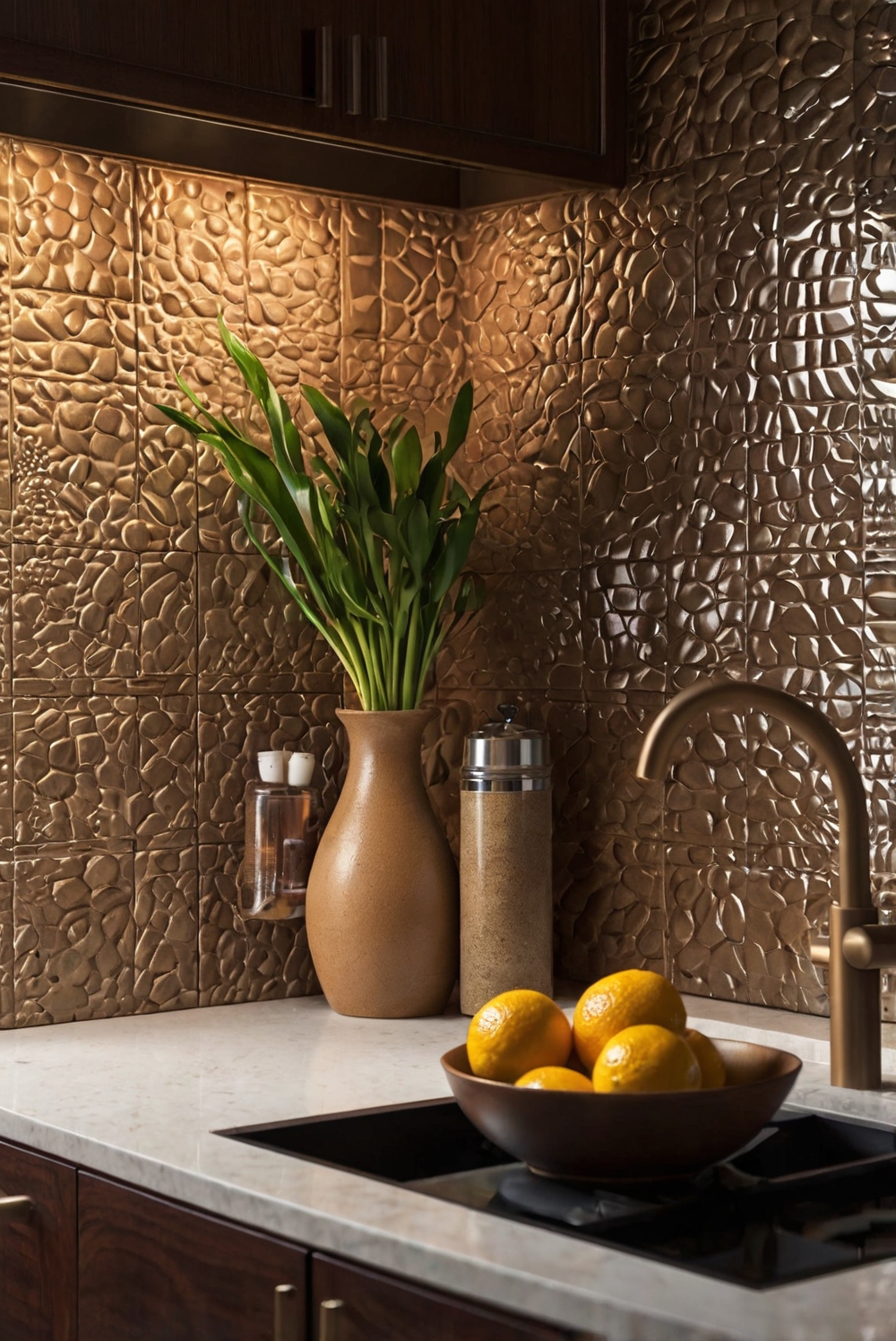Discover why texture is a crucial aspect in kitchen backsplash design. Learn how to incorporate diverse textures for a dynamic and personalized interior space.
Texture is a critical element in a kitchen backsplash design as it adds depth and visual interest to the space. The texture can enhance the overall look of the kitchen by providing a tactile experience and creating a unique aesthetic. When selecting the texture for your backsplash, consider factors such as ease of cleaning, durability, and style compatibility with the rest of your kitchen decor. Opt for materials like textured tiles, natural stone, or glass to achieve an appealing look. By carefully choosing the texture for your kitchen backsplash, you can elevate the design of your space and create a cohesive and inviting environment for daily use.
Additionally, incorporating texture into your kitchen backsplash design can help in creating a focal point in the room, adding dimension to the walls, and breaking the monotony of a flat surface. It also allows you to experiment with different patterns and finishes, transforming a basic kitchen into a visually appealing space. When choosing textures, consider the style of your home decor interior design and ensure that the texture complements the overall aesthetic.
To ensure a well-coordinated and visually appealing kitchen backsplash design, consider the following steps:
1. Begin by selecting the right texture that aligns with your home interior design.
2. Choose a color scheme that complements the overall palette of your kitchen and home interior.
3. Pay attention to the scale of the texture and how it interacts with other design elements in the room.
4. Experiment with different textures and materials to find the perfect balance for your kitchen backsplash design.
5. Prioritize functionality and maintenance, selecting textures that are easy to clean and maintain for daily use.
By incorporating texture thoughtfully into your kitchen backsplash design, you can transform your space into a stylish and functional area that reflects your personal style and enhances the overall appeal of your home interior.
Why Texture Matters in Your Kitchen Backsplash Design?
Texture plays a crucial role in creating a visually appealing and functional kitchen backsplash design. The texture of your backsplash can significantly impact the overall look and feel of your kitchen space. Here are some reasons why texture matters in your kitchen backsplash design:
– Visual Interest: The texture adds depth and dimension to your backsplash, making it more visually intriguing. It can break up the monotony of a plain wall and create a focal point in your kitchen.
– Personality and Style: The texture of your backsplash can reflect your personal style and add character to your kitchen. Whether you prefer a sleek and modern look or a more rustic and natural feel, the texture can help convey the desired aesthetic.
– Practicality: Beyond aesthetics, texture also serves a practical purpose in your kitchen. Textured surfaces can hide fingerprints, water spots, and other imperfections better than smooth surfaces, making them easier to maintain and clean.
How to Choose the Right Texture for Your Kitchen Backsplash?
When selecting the texture for your kitchen backsplash, consider the following factors:
– Material: Different materials offer various textures, from smooth glass to rough stone. Choose a material that complements your kitchen design and provides the desired texture.
– Style: Consider the overall style of your kitchen and select a texture that enhances it. For example, a subway tile texture may suit a modern kitchen, while a brick texture may complement a farmhouse-style kitchen.
Benefits of Incorporating Texture into Your Kitchen Backsplash Design
Incorporating texture into your kitchen backsplash design can offer several benefits:
– Enhanced Visual Appeal: Texture adds visual interest and depth to your kitchen, making it more visually appealing.
– Increased Personality: The texture can help personalize your kitchen space and showcase your unique style.
Practical Tips for Adding Texture to Your Kitchen Backsplash
Here are some practical tips for incorporating texture into your kitchen backsplash design:
– Mix and Match: Consider mixing different textures, such as combining smooth and rough materials, to create a dynamic and interesting backsplash.
– Experiment with Patterns: Play with patterns to add texture to your backsplash, such as herringbone or chevron designs.
Challenges of Using Texture in Your Kitchen Backsplash
While texture can enhance your kitchen backsplash design, it also presents some challenges:
– Cleaning: Textured surfaces may require more effort to clean compared to smooth surfaces, as dirt and grime can get trapped in the crevices.
– Cost: Some textured materials may be more expensive than smooth ones, adding to the overall cost of your kitchen renovation.
Final Thoughts on Texture in Your Kitchen Backsplash Design
Texture is a critical element in creating a stunning and functional kitchen backsplash. By carefully selecting the right texture that complements your style and design preferences, you can transform your kitchen into a visually appealing and practical space.

